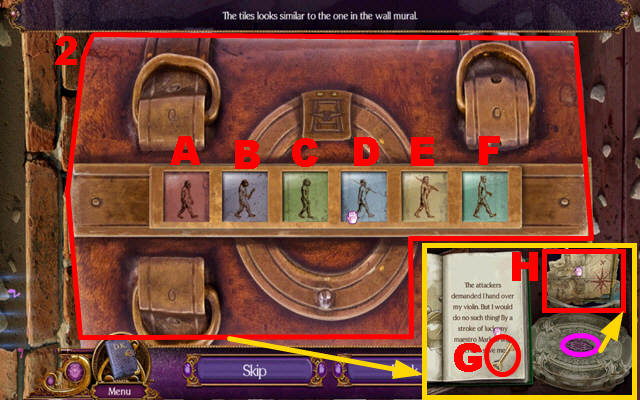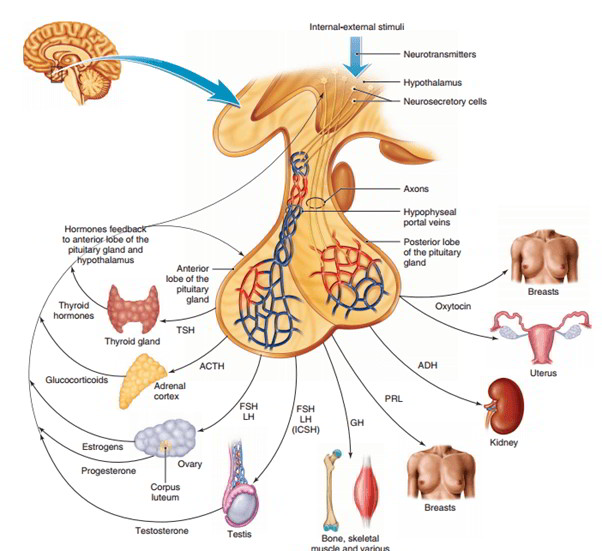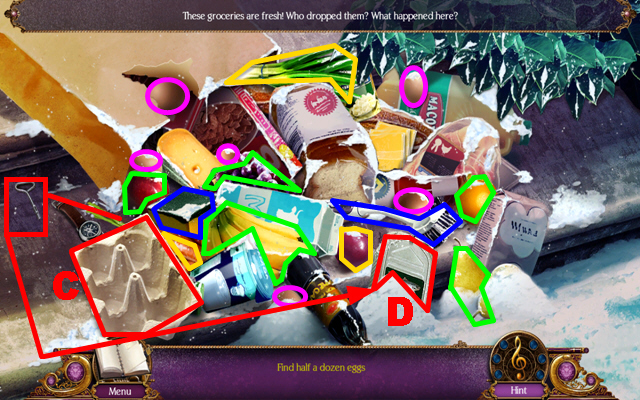Therefore, brain physiology is the study of the functions and processes that involve the brain. Brain physiology also includes the study of the component parts of the brain, and its possible problems and dysfunctions. The brain is the control center, the receptor is our body's temperature sensors, and the effector is our blood vessels and sweat glands in our skin. When we feel heat, the temperature sensors in our skin send the message to our brain. Our brain then Human Physiology. This site was designed for students of anatomy and physiology. It contains textbook resources, such as chapter review guides, homework sets, tutorials, and printable images. Each chapter has a practice quiz and study tips for learning the topic. The brain also receives and interprets a multitude of signals sent to it by other parts of the body and by the environment. Weighing in at a mere three pounds, the brain resembles a gray sea spongehence the term gray matter, and it is the central control system for the entire body. Anatomy and Physiology of Nervous System Part Brain brain games anatomy human body human anatomy pituitary gland human resource management human heart spinal Human Anatomy. Biology Anatomy Basics Cells Genetics Organisms Physiology Botany Ecology Chemistry Physics Geology Astronomy Weather Climate Science, Tech, Math Science; Math; Basic Parts of the Brain and Their Responsibilities. Learn About the Function of the Pineal Gland. Anatomy and Physiology of brain PowerPoint Presentation, PPT DocSlides Brain cells. The brain and nervous system are made of nerve cells called neurons. Neurons send electrochemical signals to one another, forming the basis of the brains complex, essential functions: to form memories and thoughts, to produce actions, and to interpret the world around us. Human PhysiologyThe Nervous System 2 General functions of the CNS Brain, brain stem, and spinal chord. CNS: The Central Nervous System, comprised of brain, brainstem, and Facts About the Brain. What do you know about physiology and the brain? Here are a few facts: Messages to and from one side of the body are usually handled by the opposite side of the brain. basic brain anatomy and physiology. pdf Free download as PDF File (. Uploaded from Google Docs Online Quizzes for CliffsNotes Anatomy and Physiology QuickReview, 2nd Edition Quiz: The Brain Anatomy and Physiology Test Prep Review The official journal of the Guarantors of Brain. Symptoms and signs of syncope: a review of the link between physiology and clinical clues. Hubris syndrome: An acquired personality disorder? A study of US Presidents and UK Prime Ministers over the last 100 years. Online shopping from a great selection at Books Store. The functions of the brain depend on the ability of neurons to transmit electrochemical signals to other cells, and their ability to respond appropriately to. Anatomy and Physiology Games Anatomy of the Brain and Skull. This is an interactive game to test your knowledge on anatomy of the brain and skull. A new study has revealed more about the organization and function of a brain structurethe paraventricular nucleus of the thalamusthat may serve a key role in linking stress detection to the development of adaptive behaviors. Traumatic brain injury (TBI) is defined as an impact, penetration or rapid movement of the brain within the skull that results in altered mental state. TBI occurs more than any other disease, including breast cancer, AIDS, Parkinsons disease and multiple sclerosis, and affects all. BI 335 Advanced Human Anatomy and Physiology Western Oregon University BRAIN ANATOMY Adapted from Human Anatomy Physiology by Marieb and Hoehn th(9 ed. ) Physiology of the Brain Metabolism. Despite weighing only about 3 pounds, the brain consumes as much as 20 of the oxygen and glucose taken in by the body. Nervous tissue in the brain has a very high metabolic rate due to the sheer number of decisions and processes taking place within the brain at any given time. Large volumes of blood must be. A second front of biological research has involved the use of brainwave recordings. The Germanborn British psychologist Hans Eysenck, for example, studied brain patterns and speed of response in people taking intelligence tests. The Anatomy and Physiology of the Brain The brain and spinal cord form the central nervous system. These vital structures are surrounded and protected by the bones of the skull and the vertebral column, as shown in the drawing. The bones of the skull are often referred to as the cranium. The Plastic Nature of the Vascular Wall: A Continuum of Remodeling Events Contributing to Control of Arteriolar Diameter and Structure Brain tumors can begin in your brain (primary brain tumors), or cancer can begin in other parts of your body and spread to your brain (secondary, or metastatic brain tumors). Brain tumor treatment options depend on the type of brain tumor you have, as well its size and location. Learn anatomy and physiology test 1 brain with free interactive flashcards. Choose from 500 different sets of anatomy and physiology test 1 brain flashcards on Quizlet. This is a test over the physiology of the brain and it's various functions. Traumatic brain injury (TBI) is damage to the brain caused by a blow to the head. Brain anatomy information, including areas of the brain. The brain structures and neurological mechanisms behind anxiety and fear are wellknown by science. To understand and cope with these emotions in your life, you must first learn the basic physiological patterns that they follow. Learn anatomy and physiology brain with free interactive flashcards. Choose from 500 different sets of anatomy and physiology brain flashcards on Quizlet. We use your LinkedIn profile and activity data to personalize ads and to show you more relevant ads. You can change your ad preferences anytime. Explore the latest articles, projects, and questions and answers in Brain Physiology, and find Brain Physiology experts. Many people never totally discover or exert the full potential of their brain. In this lessonyou will explore current research on what the brain is Chapter 1: Know Yourself Socrates Lesson 4: Brain Structure and Function ). Eight bones form the skull and Figure 2. The inside of the skull is divided into three areas called the anterior, middle, and posterior fossae. 2 Brain The brain is composed of the cerebrum, cerebellum, and brainstem (Fig. Anatomy and Physiology of the Brain The four divisions of the adult brain. The cerebrum consists of two cerebral hemispheres connected by a bundle of nerve fibers, the corpus callosum. Tutorials and quizzes on the anatomy and physiology of the brain, using interactive animations and diagrams. An introduction to the Cerebrum anatomy explained beautifully in an illustrated and interactive way. The brain is a spongy organ made up of nerve and supportive tissues. It is located in the head and is protected by the boney covering called the skull. The base or lower part of the brain is connected to the spinal cord. Together, the brain and spinal cord are known as the central nervous system (CN Neuroscience: the Science of the Brain. Inside our heads, weighing about 1. 5 kg, is an astonishing living organ consisting of billions of tiny cells. It enables us to sense the world around us, to think and to talk. members of the University Department of Physiology in Oxford, particularly Colin Blakemore, and helpful colleagues in other Human anatomy and physiology. A list of progress levels towards mastery. Each section presents a subprogress percentage. Once you've reached 100 on each level, you've achieved mastery. Tab to the control panel and use leftright keys to navigate. Autonomous Sensory Meridian Response (ASMR) is the sensation experienced by some individuals in response to specific sights and soft sounds, such as whispering, tapping or slow hand movements. A fact sheet outlining how a teenagers brain grows, matures, and adapts to the world. This fact sheet also briefly covers the teen brains resiliency, onset of some mental illnesses, and sleep patterns in. Information theory Physiology: Almost as soon as Shannons papers on the mathematical theory of communication were published in the 1940s, people began to consider the question of how messages are handled inside human beings. After all, the nervous system is, above all else, a channel for the transmission of information, and the brain is, among other things, an information processing and. An Online Examination of Human Anatomy and Physiology. Animated Text Narrations and Quizzes to Explain the Structures and Functions of the Human Body Systems. The triune brain theory looks at the evolutionary stages of the brain and postulates that the human brain is actually three brains in one. The three brains of MacLean's triune brain theory are: the reptilian brain, the mammalian brain, and the human brain. Anatomy Physiology; The Brain; All Subjects. Anatomy and Physiology Test Prep Anatomy and Physiology Test Prep Review; Anatomy and Chemistry Basics The largest and most visible part of the brain, the cerebrum, appears as folded ridges and grooves, called convolutions. The following terms are used to describe the convolutions. Transporters at the neurovascular unit (NVU) are vital for the regulation of normal brain physiology via ion, water, and nutrients movement. In ischemic stroke, the reduction of cerebral blood flow causes several complex pathophysiological changes in the brain one of which include alterations of the NVU transporters which can exacerbate stroke. Physiology ( f z i l d i Galen also saw the human body consisting of three connected systems: the brain and nerves, which are responsible for thoughts and sensations; the heart and arteries, which give life; and the liver and veins, which can be attributed to nutrition and growth. Biology 105: Anatomy Physiology has been evaluated and recommended for 3 semester hours and may be transferred to over 2, 000 colleges and universities. Gross Anatomy of the Human Brain. Physiology Behavior is aimed at the causal physiological mechanisms of behavior and its modulation by environmental factors. Physiology Behavior is aimed at the causal physiological mechanisms of behavior and its modulation by environmental factors. (LPS) on inflammatory markers in blood and brain and on behavior in individually.











